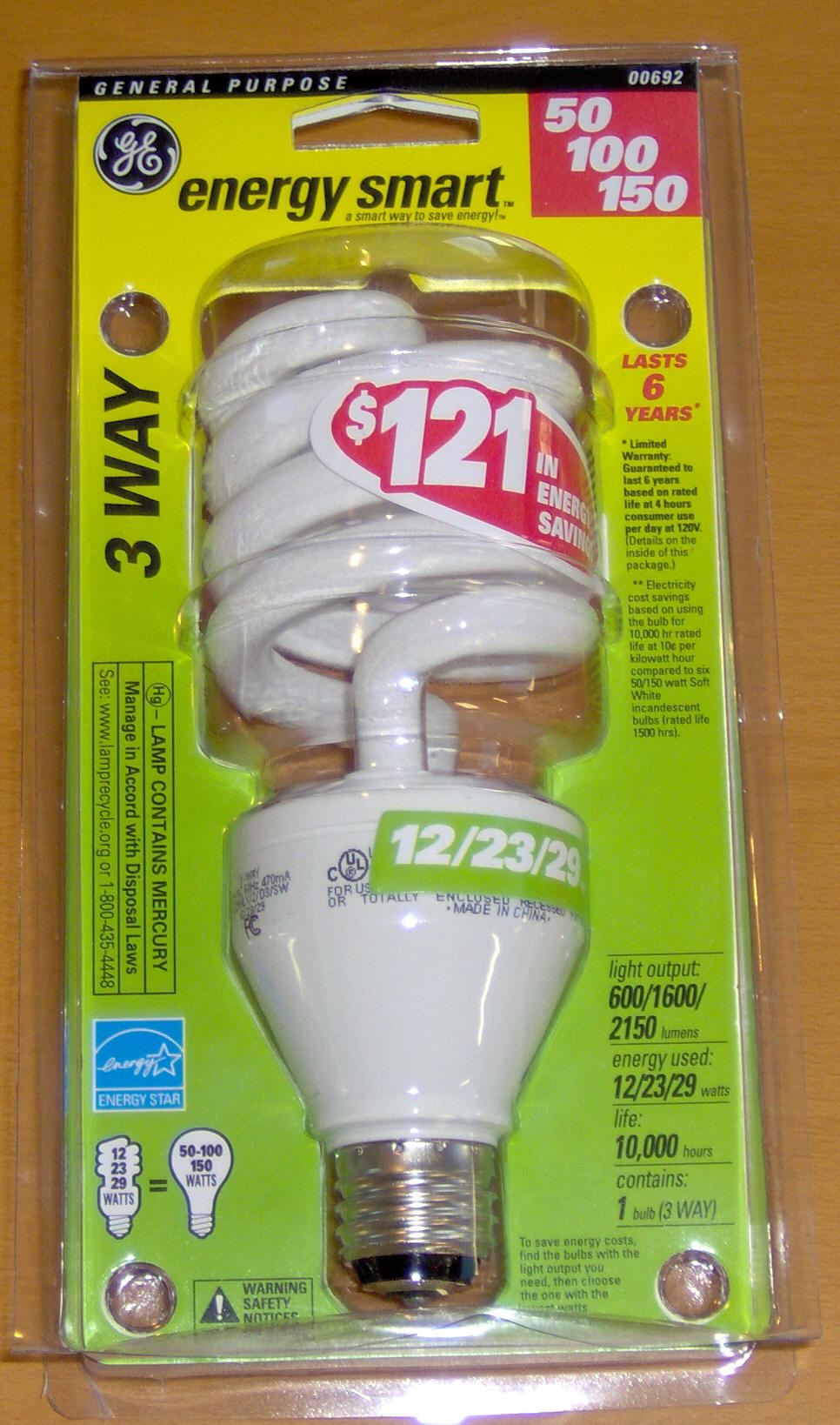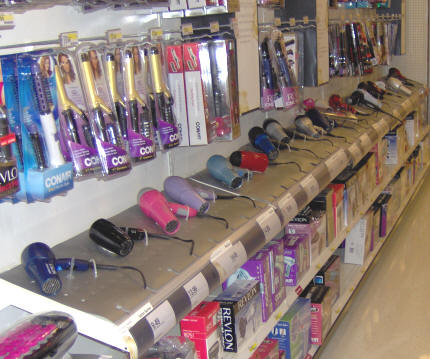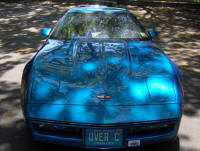RIKLBLOG
|
| Tomorrow |
| 13 Oct. 2008 |
| Yesterday |
| Index |
| Eventide |
| SETI League |
| PriUPS Project |
| Bonus! |
| Contact |


50 - 100 - 150 - 1875
 |
More good news from the compact fluorescent lamp (CFL)
front. Just days ago I offered a
RIKLReview(TM)
of a Philips dimmable CFL.
As many are doing (and as everyone should be doing,) I am
replacing the incandescent lamps in my house with CFLs. It
seems easy—it requires only one Richard to screw in a light
bulb.* But two problems prevented me from doing a nearly
complete job. The first, dimmability, was effectively
resolved by using the CFL in the review. That left the
second problem, the accursed 3-way bulbs used in common table lamps.
I am pleased to report that, due to an unusual spasm of shopping on my part, that problem has been resolved as well. For $11.95, I found (at the local Target) a 3-way CFL. It promises to save $121 in energy over its life, and I can actually believe it. 3-way incandescent lamps are especially irritating to me. Since they have two filaments,** they tend to lose their 3-way-ness early. and, since they have two filaments, they are expensive to replace. |
I exchanged this CFL for the bulb in a table lamp that gets used many hours a day, cutting energy use therein by 3/4, and providing a fully-tested replacement bulb for the table lamps that see only infrequent use. There's no need to "review" this lamp. It seems to be like any other CFL, just with three brightness levels.
Q: OK, I see the info on the CFL. But you failed to
answer the most important question. What conceivable exigency
could have forced you to shop?
A: Busted! See below.
Why Does Your Hair Dryer Work?
I once did have a legitimate need for a hair dryer. "Shrink tubing" is an irradiated polyolefin hollow and flexible plastic tube that comes in various diameters from a mm or so to several cm. If you insert a wire splice, connector pin, or other electrical connection in a piece and then heat it, the tubing diameter shrinks. If the piece of tubing was the right size to begin with, it will shrink enough to conform to the surface of the electrical connection, thus protecting it from chemical or mechanical insult and from human fingers. One normally heats the shrink tubing with an industrial "heat gun." These are rugged, expensive devices equipped with variable settings and OSHA warnings. If one has only occasional need for a heat gun, "rugged" and "expensive" aren't the first qualities you seek. "Cheap" is, and it is hard to avoid considering modifying a common hair dryer to do the job. I found a used one and it met my shrink-tubing requirements for many years.
Unmodified, however, hair dryers are not particularly valuable, since they're essentially useful only for drying hair. Hair also dries by itself, and I have been accumulating a steadily decreasing body of evidence about the truth of that statement. How remarkable, then, that I found myself in the company of a human female who actually desired to own one of these appliances! She was such a good sport about hanging out with me while I attempted to charge the battery on the airplane that I could hardly deny her a side trip to a "store" where hair dryers were on sale. In other words: We shopped.
On the rare occasions I am involved in this sort of activity, I try to make it entertaining and/or educational. In this case it was both. Entertaining in that the chocolate shelves had hitherto undiscovered confections. Educational in that I discovered the 3-way CFL and several curious facts about hair dryers. I summarize them now:
- There are a lot of hair dryer models and brands.
- They vary in price, at least in this store, from slightly under $10 to about $57, almost a 6 to 1 ratio.
- Notwithstanding the above, every single last dryer-jack amongst them has precisely the same electrical rating: 1875 Watts.
- Which is just plain wrong, verging on impossible.
 |
I live within a short drive of several large stores.
WalMart, Target, Home Depot, BJ's and a host of others are within
range, and I will admit to getting a "God Bless America" frisson
whenever I enter one of them. 18 models of hair dryer on one
shelf! Almost 34 alleged kilowatts of evaporative power in a
compact array. I'm sure Target could show CERN a thing or two! Put these babies around the Large Hadron Collider and you'd have miniature (and very dry) black holes in seconds. |
I've been told that it's "illegal to take pictures in stores." I don't believe it, but I'll be honest here and tell you that a few didn't display their wattage prominently and after a few strobe flashes I didn't want to hang around to do more research. From the cheapest to the most expensive, 1875 was the only number I saw. One can only speculate at the ineffable product differences one finds along the pricing spectrum.
 |
 |
 |
 |
 |
| $49.99 | $56.99 | $24.99 | $13.99 | $9.49 |
None of which has anything to do with the actual theme of this blog item, which is, simply:
Ohm's Law
Ohm's law, E=IR and permutations thereof, tells us that in order to get 1875 watts out of a nominally 115 Volt outlet, you need 16.3 Amperes of current. Circuit breakers are typically 15A. So technically, and often practically, you will blow a 15A breaker if you use any one of these units and their specification is true. Even if your voltage tends toward the higher end, 120V, it still isn't enough—the maximum in that case is 1800W to avoid overloading most breakers.
Other factors that militate against the accuracy of this surprisingly uniform specification include the fact that ordinary household wiring has a voltage drop. Normally insignificant with a small light bulb or electric shaver, it can easily reach 10V or more with heavy loads such as coffee makers and toasters. (Yes, and hair dryers. I know you're paying attention.) And of course you don't dare have anything else on the same outlet or same circuit!
In other words, if the universal hair dryer specification were accurate, we would have millions of people resetting their circuit breakers after every shampoo. (And I give thanks every day that it's shampoo.) Why doesn't this happen? I took advantage of a testing opportunity and discovered that the dryer purchased so many paragraphs ago took 1100W. Another few added minutes in the bathroom, but with no breakers tripped in the process.
The final question, then, is: Why the uniform yet bogus specification? Surely USDUC has nothing to do with hair dryer specifications. And it's hard to believe that the Swiss Federal Yodeling Association would be interested in such a parochial matter.
*This is not entirely accurate. Home lighting fixtures are so cheaply made that sometimes it is difficult to screw out a light bulb. I managed once to deliver a nasty cut to a finger in the process, and required assistance to apply a bandage. It was still only one Richard, albeit with help from a compassionate Band-Aid wielder.
**The "The filament is the best part" according to a guy on the Joe Pyne show in days of yore. His shtick? Eating light bulbs.
| Special Advertising Section | ||
 |
Please buy this lovely blue
Corvette ZR1!
(The Mitsubishi has been sold, and the buyer (from South Dakota!) has it safely home.) |
|
NP: "Rave On Part II" - Chemical Wedding
| © 2008 |
| Richard Factor |